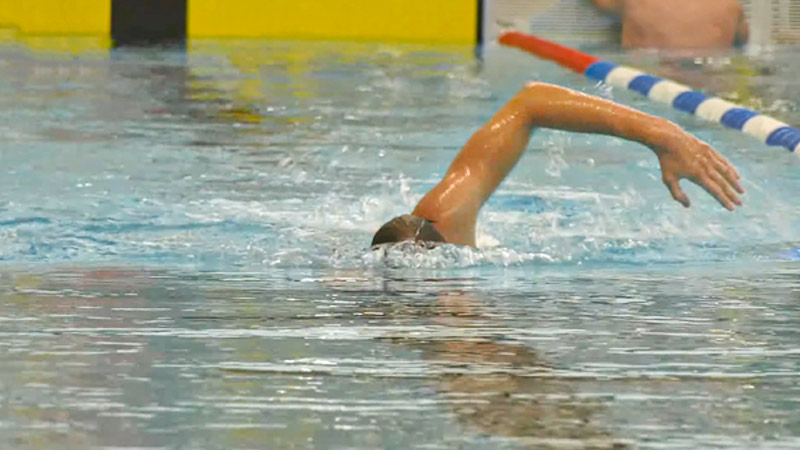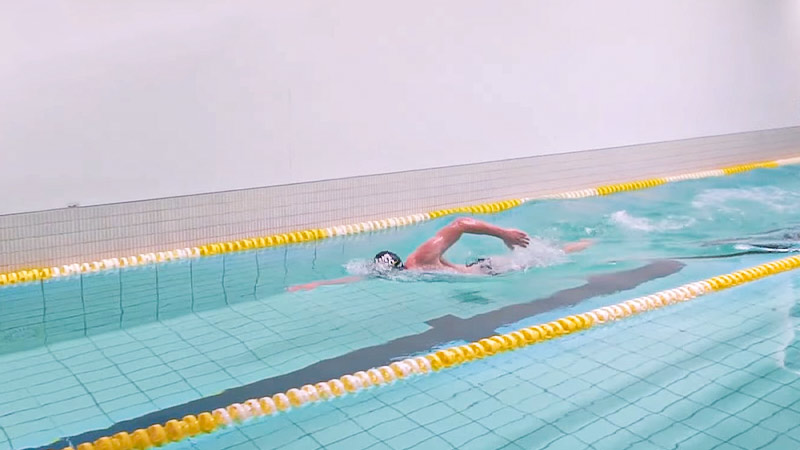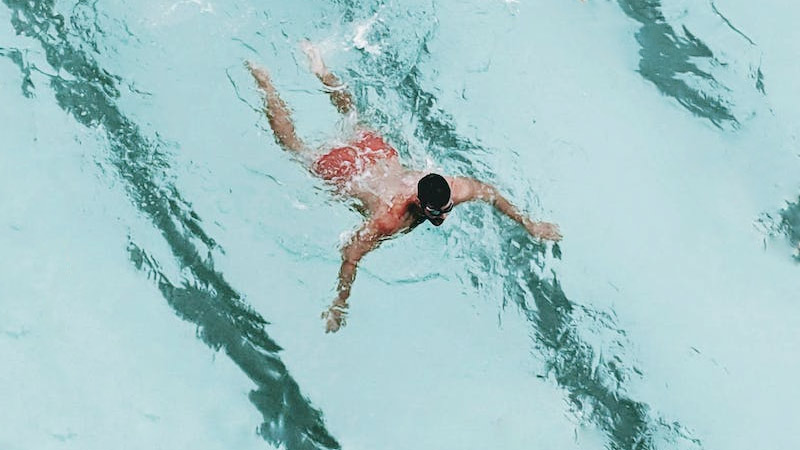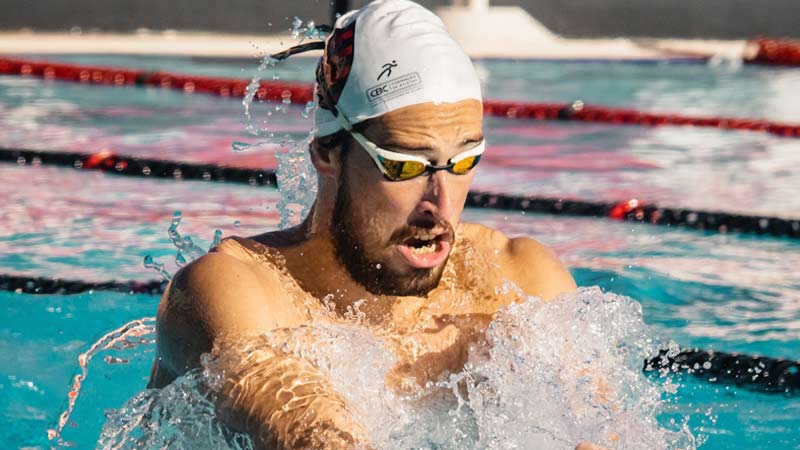Diving into the question of whether swimming enhances flexibility opens a door to the multifaceted benefits of this aquatic exercise.
Beyond its well-known cardiovascular advantages, swimming has gained recognition for its potential to make individuals more flexible.
The rhythmic strokes, water resistance, and full-body engagement in swimming create a unique synergy that targets various muscle groups and joints.
This introduction sets the stage for an exploration into how swimming can influence and improve flexibility, unraveling the ways in which this water-bound activity becomes a catalyst for a more agile and supple body.
How Does Swimming Make You More Flexible?
Yes, swimming can indeed make you more flexible. Unlike some forms of exercise that may primarily focus on specific muscle groups, swimming engages a wide range of muscles throughout your body.
The combination of resistance and buoyancy in water creates a unique environment that promotes flexibility in several ways.
Here is how swimming makes you more flexible:
Full-Body Engagement
Swimming involves various strokes that require the use of different muscle groups simultaneously.
Freestyle, breaststroke, backstroke, and butterfly strokes engage your arms, legs, core, and back muscles. This full-body engagement helps to improve flexibility throughout the entire body.
Range of Motion
The nature of swimming encourages a wide range of motion in your joints. The continuous and fluid movements required in different strokes enhance flexibility in the shoulders, hips, and ankles. Over time, this increased range of motion can contribute to improved overall flexibility.
Dynamic Stretching
Swimming incorporates dynamic stretching as a natural part of the exercise. Dynamic stretches involve controlled, active movements that take your joints and muscles through their full range of motion.
This type of stretching is particularly effective in promoting flexibility, as opposed to static stretching, which involves holding a position for an extended period.
Water Resistance
The resistance of water is more significant than air, requiring your muscles to work harder. As you move against the resistance of the water, your muscles elongate and contract, promoting flexibility.
Water resistance also helps to improve muscle strength, contributing to better overall flexibility.
Low-Impact Exercise
Swimming is a low-impact exercise, making it suitable for people of various fitness levels and ages.
This low-impact nature means that joints are less stressed compared to high-impact activities, allowing for consistent exercise without putting excessive strain on the body.
This is particularly beneficial for individuals with joint issues or those recovering from injuries.
Increased Blood Flow
Swimming enhances blood circulation, delivering oxygen and nutrients to your muscles. Improved blood flow helps in reducing muscle stiffness and promotes faster recovery.
The warmth of the water also contributes to increased blood flow, enhancing the overall flexibility of muscles and joints.
Relaxation and Stress Reduction
The rhythmic and repetitive movements in swimming can have a relaxing effect on your body. Reduced stress and tension can positively impact flexibility, as tight and tense muscles are more resistant to stretching.
Swimming provides a soothing environment that can help your muscles relax and become more pliable.
Buoyancy Effect
The buoyancy of water supports your body weight, reducing the impact on joints. This allows for more extensive movements without the stress associated with weight-bearing exercises. The buoyancy effect contributes to a gentle, yet effective, stretch of muscles.
Benefits of Swimming

Swimming is a highly beneficial and versatile form of exercise that offers a wide range of advantages for physical and mental well-being.
Here are the key benefits of swimming:
Cardiovascular Health
Swimming is an effective way to elevate your heart rate, promoting cardiovascular health. It improves circulation, lowers blood pressure, and reduces the risk of heart disease.
The combination of aerobic exercise and resistance training in water makes it an optimal choice for maintaining a healthy cardiovascular system.
Full-Body Workout
Each swimming stroke engages specific muscle groups, providing a comprehensive full-body workout.
For example, the freestyle works the shoulders and arms, the breaststroke targets the chest and legs, while the butterfly emphasizes core strength. Regular swimming contributes to balanced muscle development and overall fitness.
Low-Impact Exercise
The buoyancy of water reduces the impact on joints, making swimming an ideal low-impact exercise. This is particularly beneficial for individuals with arthritis, joint pain, or those recovering from injuries.
The smooth and fluid movements in water decrease stress on the joints compared to weight-bearing exercises.
Weight Management
Swimming is an effective calorie-burning activity that supports weight management. The resistance of water requires more energy expenditure than many land-based exercises, making it a valuable addition to weight loss or maintenance programs.
Increased Flexibility
Swimming promotes flexibility through dynamic stretching. The range of motion involved in strokes like freestyle, backstroke, and butterfly enhances joint flexibility, contributing to improved overall flexibility and reduced muscle stiffness.
Stress Reduction
The calming and meditative aspects of swimming make it an excellent stress reliever. The rhythmic nature of swimming, combined with the buoyancy of water, creates a tranquil environment that can reduce stress, and anxiety, and promote mental relaxation.
Improved Posture

Swimming requires maintaining a streamlined and horizontal body position, encouraging good posture.
The emphasis on body alignment during swimming translates into better posture outside of the pool, contributing to spine health and reducing the risk of postural issues.
Enhanced Respiratory Function
Controlled breathing in swimming enhances respiratory function. Learning to synchronize breathing with swimming strokes improves lung capacity and efficiency, providing benefits for individuals with asthma or other respiratory conditions.
Increased Endurance
Regular swimming sessions gradually build endurance. The combination of cardiovascular training and muscle engagement enhances stamina, allowing individuals to sustain physical effort for more extended periods.
Social Interaction
Whether through swim classes, community pools, or swim teams, swimming often involves social interaction.
This social aspect contributes to mental well-being by fostering a sense of community, support, and camaraderie.
Therapeutic Benefits
Swimming is widely used for rehabilitation due to its therapeutic benefits. The buoyancy of water reduces stress on injured or healing body parts, making it a valuable exercise for individuals recovering from surgeries, injuries, or managing chronic conditions.
Temperature Regulation
Swimming in a controlled environment allows for comfortable temperature-regulated exercise.
This is especially advantageous for individuals who might find other forms of physical activity uncomfortable due to extreme weather conditions.
Lifelong Skill
Learning to swim is not just a physical activity; it’s a life skill with numerous benefits.
Beyond the health advantages, knowing how to swim enhances water safety and opens up opportunities for enjoyable recreational activities like snorkeling, diving, and various water sports.
Does Swimming Stretch Your Spine?

Yes, swimming can contribute to stretching your spine. The combination of buoyancy, water resistance, and the variety of strokes involved in swimming can have positive effects on the flexibility and elongation of the spine.
Here’s how swimming stretches your spine:
Buoyancy and Decompression
The buoyancy of water reduces the gravitational pull on your body, providing a sense of weightlessness.
This buoyancy effect is particularly beneficial for the spine as it allows for a gentle decompression of the vertebral discs. This can help alleviate compression that occurs during weight-bearing activities on land.
Improved Posture
Proper swimming techniques, such as maintaining a horizontal and streamlined position in the water, encourage good posture.
A well-aligned spine during swimming can contribute to the elongation of the spine over time, promoting better posture both in and out of the water.
Backstroke and Spinal Extension
Backstroke is a swimming stroke where you float on your back and move your arms in a circular motion.
This stroke promotes spinal extension, stretching the muscles along the back and encouraging a natural curvature of the spine.
The repetitive nature of backstroke can contribute to increased flexibility in the spinal column.
Freestyle and Core Engagement
Freestyle swimming involves rhythmic arm movements and a constant kicking motion, engaging the core muscles. A strong and flexible core supports the spine and contributes to its overall health.
The rotational movements in freestyle also involve the twisting of the torso, providing a beneficial stretch to the muscles surrounding the spine.
Butterfly Stroke and Abdominal Stretch
The butterfly stroke requires a powerful dolphin kick and simultaneous arm movements.
This dynamic stroke engages the abdominal muscles, promoting a stretching effect on the muscles along the spine.
The undulating motion of the butterfly stroke can contribute to increased flexibility in the lumbar region.
Dynamic Stretching in Water
Swimming involves dynamic stretching, where your body moves through a full range of motion. This type of stretching is particularly effective in promoting spinal flexibility.
The continuous and fluid movements in the water allow for controlled stretches that are gentle on the spine.
Reduced Impact on Joints
Swimming is a low-impact exercise, minimizing stress on joints. This is especially beneficial for the spine, as it allows for movement without the jarring impact associated with some land-based exercises. The reduced impact supports overall spinal health and encourages flexibility.
FAQS
Is swimming good for flexibility?
Yes, swimming is excellent for flexibility. It engages various muscle groups and promotes a wide range of motion, contributing to improved flexibility.
Does swimming increase flexibility?
Absolutely. The dynamic movements and resistance in water promote flexibility, leading to an increased range of motion in joints and enhanced muscle suppleness.
Does swimming improve flexibility?
Yes, swimming is known to improve flexibility. The combination of full-body engagement, dynamic stretching, and water resistance helps enhance overall flexibility.
Does swimming help flexibility?
Certainly. Swimming is a low-impact exercise that actively involves multiple muscle groups, fostering flexibility by encouraging joint mobility and muscle elongation.
Does swimming help with flexibility?
Yes, swimming is beneficial for flexibility. The consistent and rhythmic movements in the water contribute to muscle relaxation, reducing stiffness and promoting flexibility.
How does swimming improve flexibility?
Swimming improves flexibility through dynamic movements, water resistance, and full-body engagement.
These factors work together to increase the range of motion and promote muscle flexibility.
Are swimmers flexible?
Generally, swimmers tend to be flexible.
The nature of swimming, which involves diverse strokes engaging various muscle groups, contributes to the development of flexibility in individuals who regularly practice the sport.
Last Words
Swimming stands as a dynamic gateway to enhanced flexibility. Its unique combination of full-body engagement, dynamic stretching, and resistance in water facilitates an increased range of motion and suppleness.
Regular participation in swimming not only fosters joint mobility but also encourages muscle elongation, contributing to improved overall flexibility.
The low-impact nature of swimming makes it accessible to individuals of diverse fitness levels, while the rhythmic, therapeutic movements in water aid in muscle relaxation.
Whether for fitness enthusiasts or those seeking rehabilitation, swimming proves itself not just as a cardiovascular exercise but as a holistic means to cultivate a more flexible and agile body.







